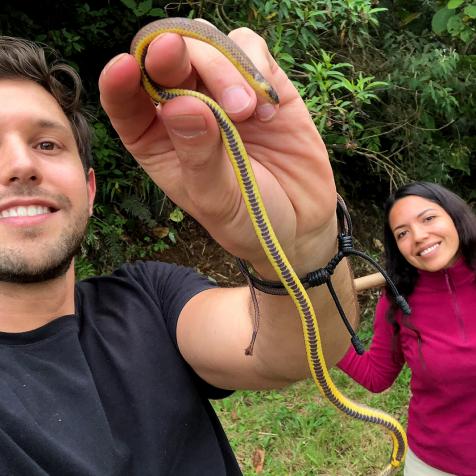
DoctorEgg
Why the People of Myanmar are Fighting Conservation Groups
The project, called Ridge to Reef, has become a highly controversial initiative despite being led by the UN’s development program.
For years, a British conservation charity has been embroiled in a battle with indigenous Myanmar people over plans to protect a swathe of forest that is home to Asian elephants, tigers, and sun bears.
The $21 million project is part-funded by British-based charity Fauna and Flora International (FFI), as well as support from the Myanmar government, and Smithsonian Institute.
The Intention

Bloomberg Creative Photos, Bloomberg Creative Photos, Bloomberg Creative Photos
The project seeks to designate 3.5 million acres in the Tanintharyi region, southeast of Myanmar, as a government protected area, including forest, coastal, and marine areas, from threats such as poachers, loggers, and mining. However, the Karen people fear their ancestral lands will be converted into protected areas, which would mean that they would not be able to grow crops, forage, or hunt for food.
Despite evidence showing that indigenous-managed land is successful not only environmentally but financially for those communities, the land would be brought under government control, which the Karen people say would threaten a delicate peace deal with the Myanmar military. The government has a history of violating human rights, according to The Border Consortium, which released a report in 2018 called “Our Forest Our Life” on the proposal. According to the report, indigenous tribes were not consulted on the project.
“If they really establish a national park here, then we cannot live here,” said one villager from Chaung Sone, a community along the Lenya River. “We will have to move, but there is no place for us to move.”
“Why aren’t they transparent? None of us want this project,” Tun Naing Oo of Hein Lai village, a remote cluster of about 80 wooden-stilted houses and one of the 52 that could be affected, told the Guardian.
Now, a coalition of organizations supporting these communities, Conservation Alliance Tanawthari (CAT), is fighting to stop the Ridge to Reef project. “This project is being developed with a top-down approach to conservation that puts indigenous Karen communities at risk,” said Naw Ehhtee Wah, coordinator of CAT. “We are calling on the government and UNDP to recognize and respect the customary lands and conservation practices of indigenous communities. Until these are recognized in full, this project should not go ahead.”
The UNDP Myanmar has reportedly suspended the project until an investigation has been completed, according to The Diplomat.
Conflicts Abound

Tanes Ngamsom
But, that’s not the only fight that is taking place in Myanmar.
In 2018, indigenous communities expelled the Myanmar Forest Department and its international partner, the Wildlife Conservation Society (WCS), from the Hkakabo Razi, over a potential UNESCO World Heritage nomination. It would be the country’s first UNESCO site, and thousands demonstrated against the nomination, which the government is trying to win by expanding the area’s national park.
U Yaw Gu, chair of Rawang Literature and Cultural Affairs in Putao, told The Irrawaddy: “Locals don’t agree with expanding the area for Mt Hkakabo Razi National Park. They believe that it will impact their life negatively...There’s no transparency in it and locals will not get compensation…for losing their land due to the expansion of the area. We simply don’t want anyone to exploit our land."
Myanmar’s Forest Department has been working with UNESCO since 2013 to designate the area as a Natural World Heritage Site. The Forest Department and UNESCO are now undergoing an initiative to “safeguard natural heritage” in Myanmar.
The region is home to 4,000 people who depend on the land for hunting, foraging, and cultivation. The communities say that Forest Department management, under a WCS-supported national park designation, resulted in a breakdown of customary practices passed down generationally, and opened up a resource grab, while destroying local livelihoods, according to Mongabay.
The community has barred outsiders from entering, and World Heritage plans are suspended indefinitely. As growing pressure mounts to protect indigenous lands, and more international NGOs step in to provide the funding to do so, it may not be the last of indigenous communities standing up to the charities parachuting in to help.


















